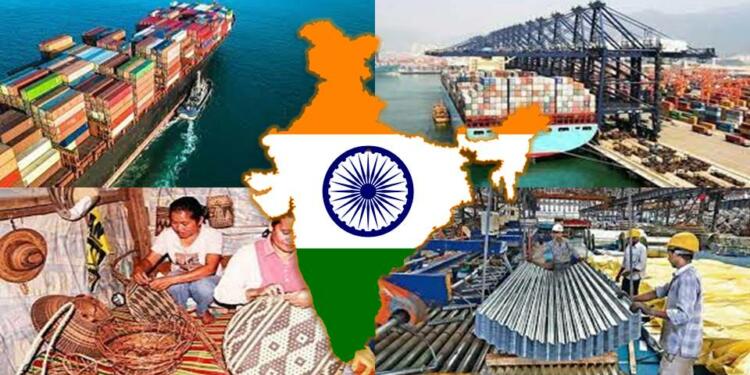Indians have an inborn inclination towards entrepreneurship. Part of the credit goes to thousands of years of civilisational ethos, while the other part of the credit goes to them struggling to survive through the last 1000 years of Abrahamic waves. Now, when we are no longer under foreign rules, this trait is being used in MSMEs to nurture the Indian economy. Soon, they are expected to contribute big towards Indian exports and help India achieve a $5 trillion economy.
New initiatives for MSMEs
Recently, PM Modi laid down a number of initiatives to accelerate the rise of Indian MSMEs. These initiatives are aimed at increasing the share of MSMEs in the Indian economy as well as to channelize a productive young labour force towards the sector. Apparently, both are interdependent on each other and it makes up for the catch-22 situation. During his address to the nation in general and MSMEs in particular at ‘Udyami Bharat’ programme in New Delhi, PM Modi laid out schemes like ‘Raising and Accelerating MSME Performance’ (RAMP) scheme, ‘Capacity Building of First-Time MSME Exporters’ (CBFTE) to get rid of the aforementioned catch-22 phenomenon. Additionally, CBFTE will also increase the share of MSMEs in Indian exports.
Emphasizing on the role of MSMEs in globalising Make-in-India, PM Modi said, “We have resolved to make local products global. The effort is to create a local supply chain for Make in India, which can reduce India’s dependence on foreign countries. Therefore, unprecedented emphasis is being given to expand the MSME sector.” During the programme, PM Modi also transferred Rs 550.08 crore to 18,000 beneficiaries under ‘Prime Minister’s Employment Generation Programme’ (PMEGP).
Role of MSMEs in Indian economy
It won’t be far-fetched that if any sector can help India achieve its true economic potential, then it is MSMEs. Surely, the role of big-ticket investments such as Adani’s huge infrastructure push and Reliance’s 4G push cannot be neglected, but even those big investments too rely on small entrepreneurs for feeder services. Additionally, MSMEs are also emerging as big enablers of Aatmanirbharta in Defence manufacturing.
Currently, around 6.3 crore MSMEs are operating in India. Initially, MSMEs were centred on developing India’s Khadi and Coir industry along with other minor ones, situated mainly in rural areas. They used to provide relief to people engaged in disguised employment in the agriculture sector. But, after PM Modi took oath, he started to push MSMEs towards contributing to other sectors as well. Today, food, agriculture, automotive, pharmaceutical, textile and chemical industries are flooded with MSME companies. They are present in both manufacturing the product at the factory as well as the supply chain in getting them to the market.
Institutional support to MSMEs
The sector has been assisted by various government led initiatives. Under Emergency Credit Line Guarantee Scheme (ECLGS), unsecured loans worth Rs 3 lakh crores were initially earmarked for the MSME sector. The amount was increased to Rs 5 lakh crore in the wake of Covid pandemic. On its part, RBI contributed as well with extension of one-time restructuring of loans to MSMEs without any classification of the asset. Other initiatives like ASPIRE scheme, Credit Guarantee Scheme, Credit Linked Capital Subsidy Scheme (CLCSS), Zero Defect Zero Effect model are also propagating the growth of MSMEs.
As a result of these initiatives, MSMEs are not limited to rural areas anymore. Today nearly 3.25 crore are based in rural areas while around 3.09 crore are urban centred. Their contribution in Gross value addition has increased over the years. As PM Modi said, their contribution in GDP is around 30 per cent. Similarly, their contribution in Indian exports hovers between 40 to 50 per cent.
It is here that this untapped potential needs to be tapped into. MSMEs need to contribute at least more than 70 per cent to export markets. This is achievable; however, there are negative consequences as well. Excessive focus on export may hamper domestic demand and increase prices. To maintain a balance, India needs to channelize MSMEs towards contributing 55 to 60 per cent of our GDP, a sign of a healthy economy.
Support TFI:
Support us to strengthen the ‘Right’ ideology of cultural nationalism by purchasing best quality garments from TFI-STORE.COM































